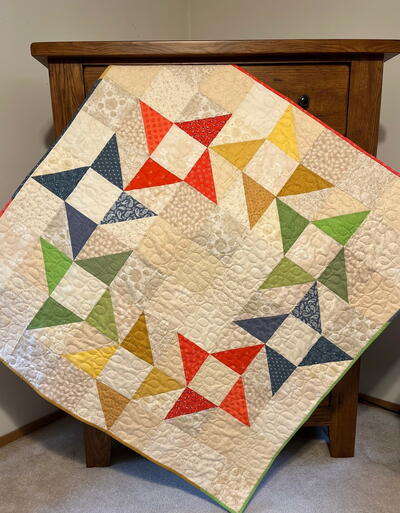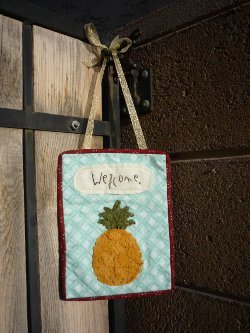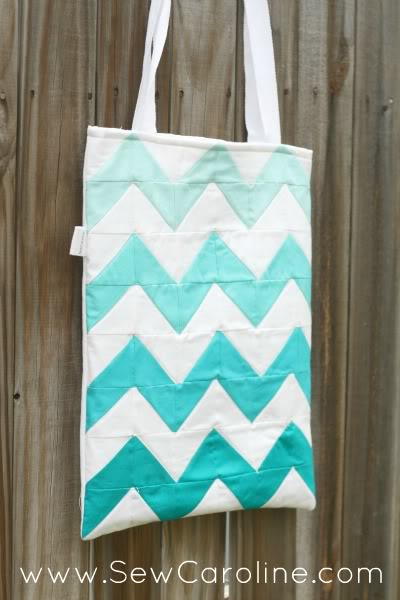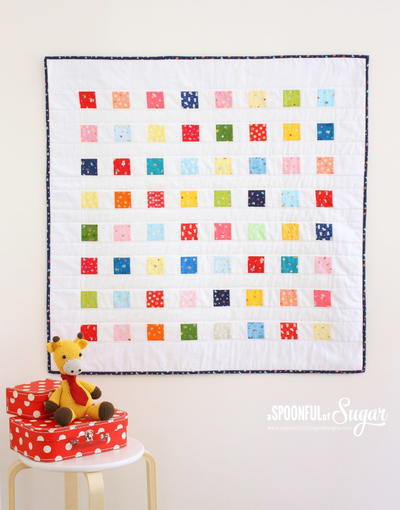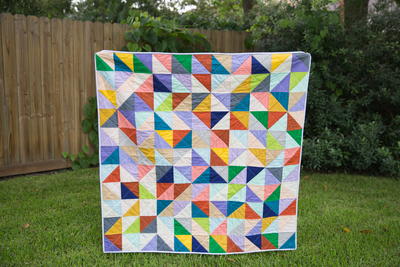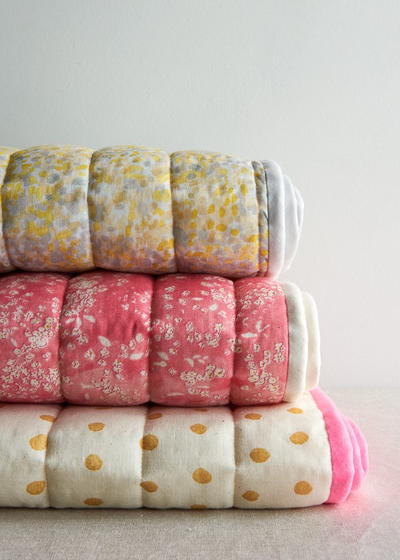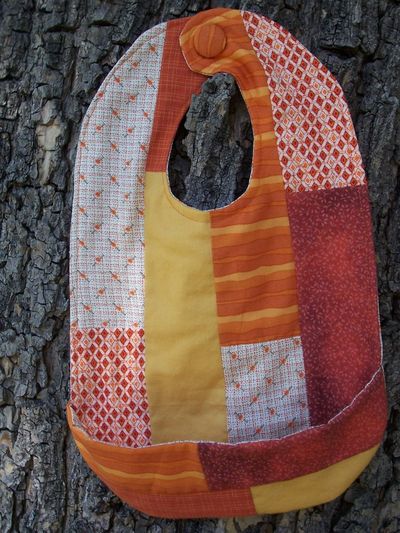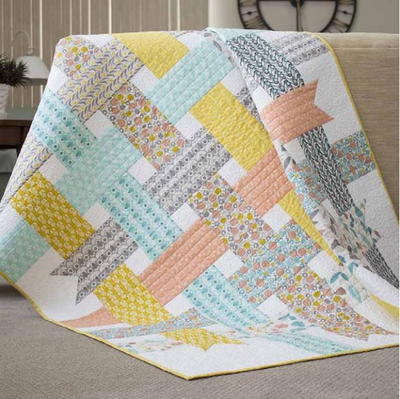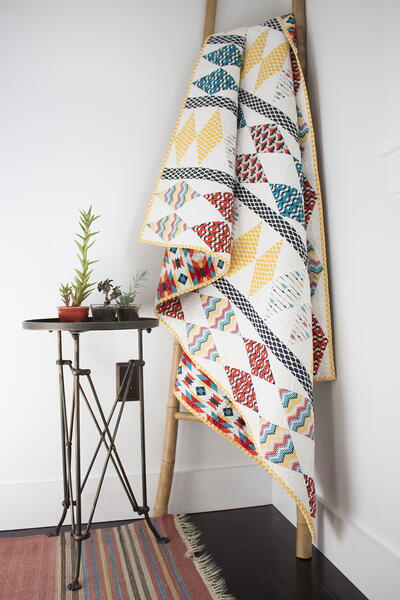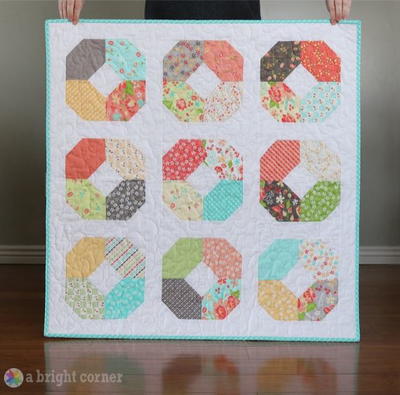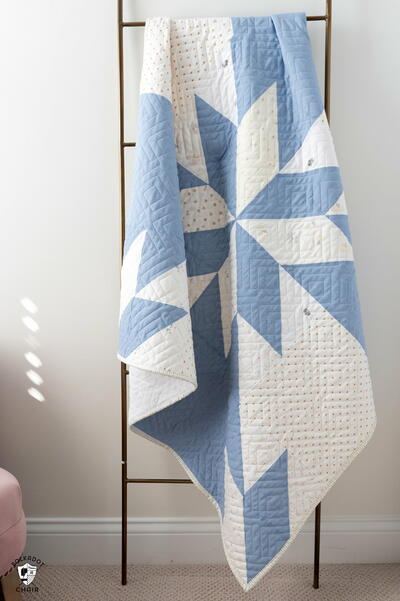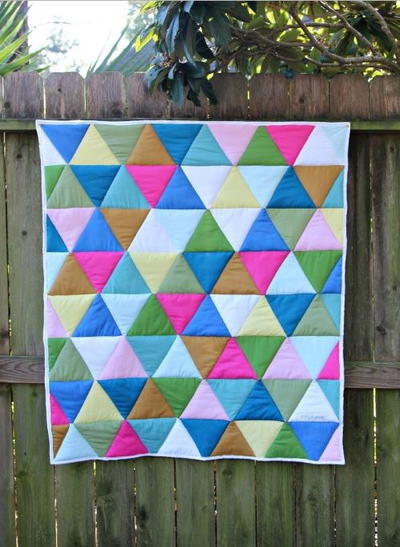Friendship Wreath Baby Quilt Pattern

This adorable baby quilt is a fun and easy Friendship Wreath Baby Quilt Pattern, designed by one of our favorite designers, Bonnie Osness! Made using an update on the classic friendship star block, this simple quilting pattern is a great way to work on your half square triangle skills. This simple design can be personalized to feature any color palette, making it an easy-to-adapt pattern for any baby room. Take a look at the pattern below, and if you love the tutorial as much as we do, print out the complimentary PDF file to get started on your own Friendship Wreath Baby Quilt today!
From the Designer: "The Friendship Wreath Baby Quilt is an easy pattern for a beginning quilter. Made with an adaptation of the friendship star quilt block, the half square triangle blocks that make up this pretty wreath are made with a two-at-a-time technique. The finished size of this quilt measures 45” x 45”.""
Find more pretty patterns from our friend Bonnie over at her blog, Lakegirlquilts.
Click Here to Download the PDF Pattern!
Join Our 100,000+ Fans And Sign Up to Receive Your FREE eNewsletter!
General Sewing Directions
- The directions for this pattern are for rotary cutting, machine piecing, machine quilting, and the binding is hand-stitched to the quilt back.
- Accurate cutting and sewing enhances your final product. Pin your pieces together before sewing them to ensure proper seam alignment.
- Use a ¼” seam allowance. I recommend using a special presser foot with a ¼” guide if you have one for your machine. This will help you get uniform seams, and matching corners!
- Follow the directions described below as you press open the seams. Each individual row is pressed in the opposite direction of the previous row to eliminate bulk and help seams to lay flat. Rows sewn together are then all pressed in one direction for a uniform look.
- The finished size of this quilt measures 45” x 45”.
Fabric Requirements
To achieve the scrappy look of this quilt I suggest using at least 16 different colored prints (4 coral, 4 blue, 4 green, and 4 yellow) and at least 8-10 different cream prints. You could make the quilt using all blues, all pinks, or entirely other different colors to match the décor of the nursery! You could also use grays for the background rather than cream. Either raid your stash, or purchase a few new fat quarters! You’ll want to choose a coordinating fabric for the binding, and another coordinating fabric for the backing. For the batting, I suggest using a thin cotton batting (like Warm & Natural).
Colored Fabric for Stars – ¼ yard of each color
Cream Fabric For Background – 1 ¾ yards total
Binding Fabric – 3/8 yard
Backing Fabric – 3 yards of 44” fabric or 1 ½ yards of 108” fabric
Batting – 1 ½ yards of 90” batting or twin-size packaged batting
Cutting Directions
Colored Fabric for Stars – 16 – 6 ½” x 6 ½” squares
Cream Fabric For Background – 16 – 6 ½” x 6 ½” squares and 49 – 5 ½” x 5 ½” squares
Binding Fabric – 5 – 2 ½” x 44” strips or 9 – 2 ½” x 22” strips
Backing Fabric – 2 – 1 ½ yard pieces of 44” fabric sewn together on long sides and trimmed to measure 51” x 51”or 108” fabric trimmed to measure 51” x 51”
Batting – 51” x 51” piece
Half Square Triangle Blocks
For this pattern you’ll need to make 32 cream/colored half square triangle blocks.
To make two half square triangle blocks at a time you’ll use 1 – colored square and 1 – large cream square.
Using a fine pencil, lightly draw a diagonal line on the wrong side of the cream square. Now, place a colored square and this cream square, right sides together, with the diagonal line facing up. Sew ¼” along both sides of the line. Then cut the two blocks apart along the line.

Press each block open toward the colored side. Use a plastic ruler to trim the blocks to 5 ½” x 5 ½”.
To trim, find where the 5 ½” horizontal and vertical lines on the ruler intersect. Place the ruler over the block, aligning the 45-degree line on the ruler to the diagonal seam and the intersecting lines on the ruler to the corner of the block. Make sure a bit of the fabric extends beyond the intersecting lines under the ruler and a bit of fabric extends beyond the outside of the ruler. Hold the ruler steady and trim the extending right and top sides of the block. This will be very minimal.
Turn the block around and place the ruler over the block so the corner you just trimmed matches with the intersecting lines on the ruler, and so the 45-degree line on the ruler aligns with the diagonal seam of the block. Trim the extending right and top sides of the block. Again, this will be minimal. Repeat for all 32 half square triangle blocks.
Assemble the Quilt Top
Now that you have all your squares cut out and your half square triangle blocks ready, you want to plan how they'll be arranged to make up the quilt top. I like to lay all my squares on a table, design wall or even the floor and play with arranging them until I get the look I want. Follow the diagram shown here to obtain the design.
The layout will be 9 squares across and 9 squares down.
The quilt top has 9 rows. Sew the squares together (right sides facing) to complete each row. Remember to use a ¼” seam allowance for all seams.
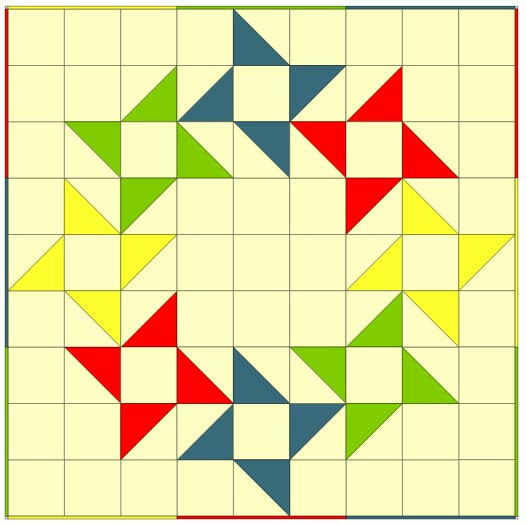
Pressing and Sewing the Rows
I wait to press the rows until I have each of them sewn together. Be careful to just “press” and NOT “iron” the seams in a back-and-forth motion, or your quilt will stretch out of shape.
Begin by pressing the seams of the first row all in one direction. Press the seams of the second row in the opposite direction. Continue to rotate the pressing direction of each row until you have the seams of all rows pressed. Think...odd rows 1, 3, 5, etc. press the seams to the right. Even rows 2, 4, 6, etc. press the seams to the left.
By using this rotating direction of pressed seams, you will have nicely nested seams and less bulk when you sew the rows to each other. This method of pressing distributes the bulk, which will make you happy when you machine quilt your project! Bulky seams can lead to bumpy quilting patterns, broken thread, and overall unevenness of your machine-quilted quilt top.
Now that you have the pieced rows pressed, sew them together! Pin rows 1 and 2 together, right sides together. Make sure to line up and nest the seams, and pin to hold them in place. Remove the pins as you come to them when you’re stitching the ¼” seam. I like to press each set of rows as I sew them together. The rows all get pressed in one direction, either towards the top of the quilt or towards the bottom. By pressing them all in one direction it will make for a uniform and smooth quilt top. Repeat until you have all of the rows sewn to each other and pressed.
Layering the Top, Batting, and Back
I refer to layering the quilt as “sandwiching”. You need to sandwich the top and back with the batting in the middle.
Tape the Backing Down – On a hard surface floor, or with two large tables pushed together, use painter’s tape to tape down the backing fabric. As you tape the back down you’ll want to make sure the fabric is smooth, without wrinkles. Also, make sure the right side of the fabric is facing down!
Add the Batting – Lay the batting on top of the taped-down quilt back, and move your hands across it to smooth it all over. This will get rid of any wrinkles in the batting, and help to adhere it to the backing fabric.
Place the Quilt Top – Once you have the batting placed on top of the quilt back, center the quilt top over the two bottom layers. Right side facing up, of course! The two bottom layers of the quilt (the back and the batting) should extend about 3” all around the outside edges of the quilt top (2” for the pillow).
Move your hands across the quilt top to smooth it all over, and help remove any wrinkles. This will also help adhere the quilt top to the batting a little bit.
Baste the Layers – You can either spray baste your quilt layers or pin them together with 1 ½” stainless pins. Place pins around the entire quilt every 4-5 inches so the three layers don’t move around when you’re machine quilting this project. Again, make sure all wrinkles are smoothed out. Adjust basting if needed to remove any wrinkles.
“Quilting” the Quilt
I used a cute, loopy pattern to machine quilt my layers together. Use whatever free-motion stitch you'd like, or use a straight stitch to quilt in the ditches or along the seams. You’ll need a darning foot to free-motion quilt, and you’ll need to either be able to lower the feed dogs on the machine or place a special cover over them. If you’re using a straight stitch to machine quilt you’ll need a walking foot.
Binding the Quilt
When you’ve finished quilting the layers together, it’s time to bind the edges of your quilt!
Prepare the Binding – Fold each of the cut binding strips in half end to end. Use the 45° line on your plastic ruler to trim the ends at a 45° angle.
When you open the strips the angles on the ends will be facing in opposite directions.
Place the ends of two strips perpendicular, right sides together, and sew ¼” seam.
Repeat to join all strips into one long binding strip. Press seams open, then press long strip in half lengthwise, right side facing out.
Sew the Binding Strip to the Quilt – Begin to sew the raw edge of the binding to the quilt by pinning it along one side. Be careful to sew the raw edge of the binding strip to the quilt, not the folded edge!
I usually start sewing the binding strip in the middle of the quilt side that I’m starting with. Start sewing about 8” in from the end of the binding strip, leaving a hanging “tail” on the binding. You’ll sew this to the other end of the binding strip when you finish sewing all along the sides of the quilt.
Stop sewing on the first side ¼” from the corner, use a pin to mark this location and sew right up to it. Backstitch a bit, and cut your thread but DON’T cut the binding strip.
Making the Mitered Corner – Now, remove the quilt and binding strip from your machine and fold the binding strip straight up so it’s perpendicular from the side you were just sewing on.
Fold the binding strip back down on itself and match it to the edge of the quilt you just sewed it to, and the next edge of the quilt you’re about to sew it to. Pin this fold in place, and pin the binding strip to this edge of the quilt and continue to sew it, again stopping ¼” from the next corner and repeating the folding process described above. Continue in this manner until you are on the last side of the quilt, the side you started on.
Connecting the Ends of the Binding – Stop stitching about 14” – 16” from where you started. Backstitch and cut the thread (but not the binding strip, not yet!), remove the quilt and binding strip from the machine.
You now have two “tails” of the binding strip, tail #1 from where you started stitching it to the quilt and tail #2 from where you ended. You’ll need to join these tails together so that you have a continuous binding strip to finish sewing down to the quilt. Follow the steps below to join the tails!
STEP 1 Lay tail #1 of the binding strip along the unsewn edge of the quilt. Trim it at a 90° angle about half way between this unsewn edge.
STEP 2 Lay tail #2 of the binding strip over tail #1 along the unsewn edge of the quilt. Measure 2 ½” beyond the trimmed straight edge of tail #1. Mark this 2 ½” measurement with a pin or pencil, and trim the tail #2 at a 90° angle also. The two trimmed binding strip tails should overlap by 2 ½”.
STEP 3 Unfold the two tails so they lay flat. Pin the two tails together perpendicular to each other (right sides together). Use a fine pencil to draw a diagonal line from the corner of tail #2 to the opposite side, as shown here.
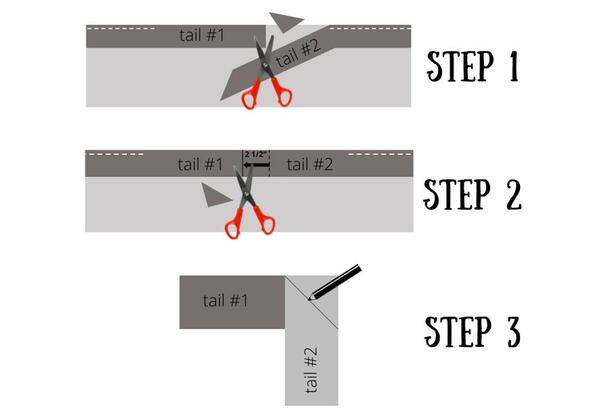
Sew along the drawn diagonal line. Fold binding strip in half again. The continuous binding strip should now lay flat along the unsewn edge of the quilt. If necessary, shorten or lengthen the continuous strip before trimming it. Then trim the outside corner ¼” from the seam and finger press the seam open. Fold it in half again and finish sewing the binding strip to the quilt.
Trim the Batting and Back – Trim the batting and quilt back to ¼” from the edge of the quilt top. I use a ruler and a rotary cutter to accomplish this task. Work carefully, so you don’t cut into your quilted project.
Hand-Stitch the Folded Binding Edge to the Quilt Back – Here is my FAVORITE part of the process, hand-stitch the folded edge of the binding strip to the back of the quilt. When you get to the corner, carefully turn the corner right-side out to make a nice, mitered corner. I tack a few stitches up the corner to hold it in place, and then continue stitching along all sides and corners until…VOILA! Your binding is complete!
If you’d like, you can add a label to the back of your quilt. Enjoy!!
Read NextCharming Lucy Quilt Pattern

